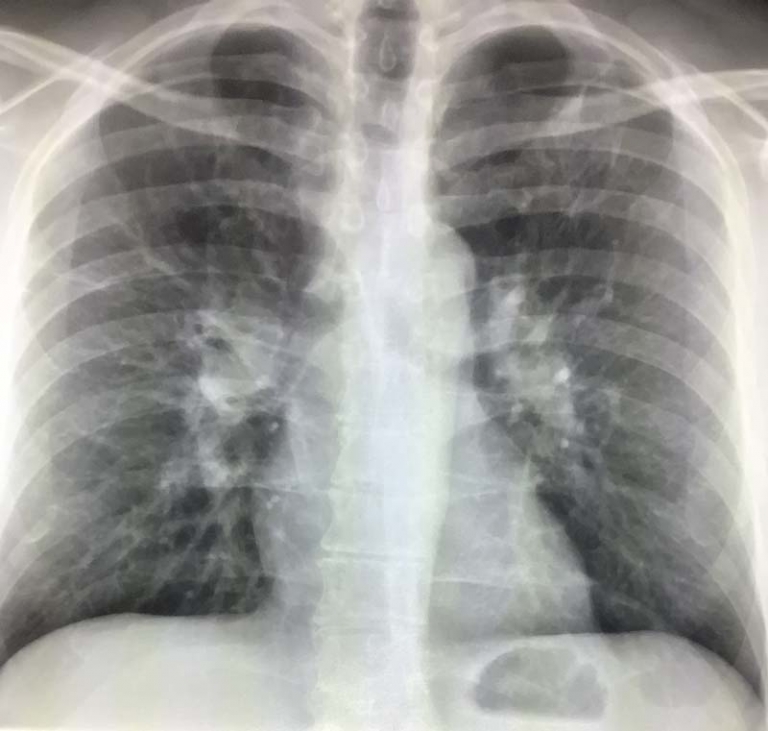Lucent Area on Chest X-ray
Lucent area is a non specific term on chest X-ray which means that an area is darker than expected. As X-rays pass through structures in the chest, an image is formed based on how the X-rays pass through tissues. Those that are tougher to pass are whiter and darker means it’s easier. The lung let’s X-rays through easily because they are mostly air, and they are dark as a result. Bones are dense and don’t allow X-rays through as easily, so they are white.
Lucent area on chest X-ray is therefore usually from gas. Gas located in places where it shouldn’t be can be a problem, and a sign of serious disease. Lucent areas can be seen surrounding the lung indicating pneumothorax. Lucent areas in the lung can be from emphysema. Lucent areas below the diaphragm can mean bowel perforation.
A pneumothorax happens when there is an air leak from the lung into the space between the lung and chest wall. The air pushes on the lung and causes it to collapse to varying degrees. This may cause difficulty with breathing and chest pain. This is most commonly caused by trauma, underlying lung disease, pockets of air that rupture in the lung (blebs/bulla) and when patient are on ventilators. On chest X-ray, this will be seen as lucent area around the lung, often at the top. The air will push the lung down or cause it to collapse.
Lucent area in the lung can be caused by pockets of air called bulla and blebs. These are most commonly related to emphysema. These pockets of air have no discernible wall and can be small or occupy a large portion of the chest. They can mimic more serious disease like pneumothorax when large.
Lucent area in the central chest or mediastinum is called pneumomediastinum. This can originate from any of the structures that pass through this region to include the esophagus, the trachea and bronchial tree or nearby structures like the lung and abdomen. This can occur from many causes including injury or rupture of the esophagus and trachea/bronchi. It can occur from lung disease, mechanical ventilation, and even benign causes. In many cases, it resolves on its own.
Lucent area under the diaphragms can be gas. There should be no gas normally under the diaphragms because it is all located within the bowel. Gas under the diaphragms means that gas has escaped the bowel and suggests a perforation. Gas under the diaphragms can also be seen after surgery and from some benign conditions. Gas can also be seen under the skin of the chest from various causes, like procedures or spread from adjacent areas.
Lucent area on chest x ray is therefore a non specific term, often indicating that gas is present somewhere where it should not be. This can be in the lung, around the lung, under the lung and diaphragms, in the central chest or under the skin. The radiologist in most cases will provide a specific diagnosis, but in some cases, you may see the term lucency used.

